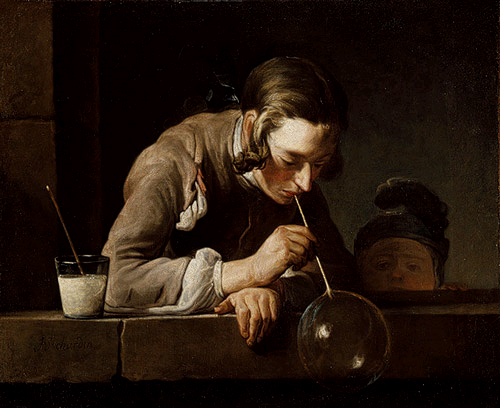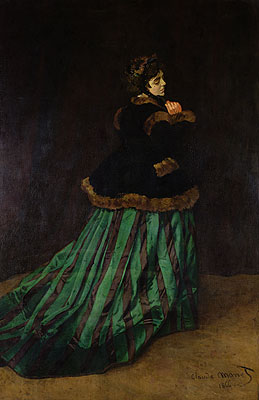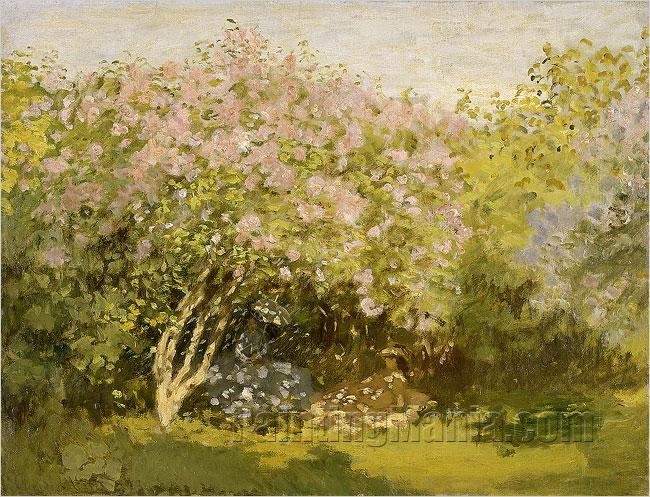Unity is one of the features that are used to add value to an image in art and design. Some artists don’t know how to use the elements of design collectively to portray collectiveness thus when a viewer looks at that image, his/her attention is focused on parts that have been made to shout for attention than others. This paper explains how artists use various techniques to bring unity in an image. The strategies used to achieve unity include proximity, repetition, and continuation (Skaalid, 1999).
Graham (2004) argues that an image in art and design is supposed to present unity all over the frame of the work. The artist should therefore choose his elements carefully to avoid conflicts of elements. For instance, let us take a look at Soap Bubbles by Simeon Chardin (The Metropolitan Museum of Art, 2010).

In this painting a young man is seen blowing soap bubbles using a small pipe and besides him is a glass containing the soap liquid which is used to reveal to the viewer the source of the bubbles. First and foremost unity is created in this image by drawing the objects close to each other and in fact the objects are touching each other. This is also referred to as proximity because there is some form of pattern in the painting.
If the objects in this image were scattered there would be no unity. Overlapping has also been applied to create unity in this image. Besides, overlapping enables the viewer to view other objects in the background which are blended with the main image. In Soap Bubbles work, overlapping does not only create unity but it also reveals the other objects that are in the background such as the young fellow who seems to be shorter than the main character (Graham, 2004).
The concept of similarity is depicted in the picture because color has also been distributed evenly to create unity. This achieved by repeating the pale brown color all over the painting. This image suggests that Chardin is a seasoned artist because the emphasis of his coloring is even.
If he had used brighter colors on some objects and dull colors on others the unity of the image would have been lost. Continuation in this image is brought by the repetition of the outline of the boy’s body structure which is progressed by the edge of the platform on which his arms rest.
Another work that applies unity is an art work that was done by Claude Monet of The Woman in the Green Dress in 1866 (Top of Art, 2010). In this painting repetition has been employed by having a continuous line of the edge of the lady’s dress which brings association among the objects of this image that is the woman and the ground on which she stands.

The line which is portrayed by the edges of the ground is progressed by the line on the edge of the lady’s dress. The pattern on the lady’s dress has been realized by repeating the two colors simultaneously, that is green and black. The upper body of the woman is blended with the lower body by the smooth edge of the coat that she wears. The shape on the edge has been repeated on other parts to indicate where her arms are and her neck.
It is important to note that the color on the edges of her jacket resembles that of the ground thus the two of them are bound by color. In fact the colors on her dress are used to add diversity to the image. Monet used dark shading which blends well with the color of this lady but she used temperate lighting to enable the viewer to differentiate between the shadow and the hair of this lady.
Monet did another painting in 1873 which was referred to as The Lilacs in the Sun (Printing Mania, 2010). In this image Monet presents unity by repeating the pink color on the bushes which blends well with the brightness of the sun.

She does this to prevent the green color from dominating the image. Barasch (2000) argues that color can be repeated to add unity and in deed in this image the green color on the surface of the grass below blends with that of the bushes above which binds them together collectively.
In conclusion, for unity in art work to be realized the artist must choose colors that are closely related. In addition to that the artist must place his/her objects close in order to bring out the intended theme of the work. Another important aspect is to ensure that there is some sort of continuation of line or direction. Therefore, the principle of unity within an art piece depicts the understanding of the principles of design.
References
Barasch, M. (2000).Theories of Art 3: From Impressionism to Kandinsky. New York, NY: Routledge.
Graham, P (2004).An Introduction to Painting Still life. Edison, N.J: Chartwell Books, Inc.
Printing Mania. (2010). Lilacs in the Sun – Claude Monet Paintings. Web.
Skaalid, B. (1999). Principles of Design: Unity. Web.
The Metropolitan Museum of Art.(2010). “Jean Siméon Chardin: Soap Bubbles (49.24)” Heilbrunn Timeline of Art History. Web.
Top of Art. (2010). Camille (The Woman in the Green Dress). Web.